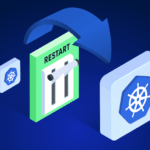
Top 5 FinOps Challenges

CEO and Co-founder
What are the top 5 FinOps challenges in 2021? The FinOps Foundation’s State of FinOps report is in and the findings are truly fascinating.
If you’re not sure what FinOps is, here’s the definition. FinOps is the intersection of people, process, and technology as it relates to cloud financial operations. If this sounds complicated, that’s because it is. FinOps practitioners are responsible for aligning business needs and engineering priorities to ensure cloud architecture is optimized for financial success.
This practice is growing in popularity and for good reason. Gartner predicts global public cloud spend will increase by 23% in 2021. If we want to stop this trend from climbing too much more in 2022, prioritizing FinOps initiatives should be on every business’s to-do list.
So if you’re getting started with FinOps what challenges should you expect? See our list below.
Ensuring engineers take action

FinOps is a two way street that is dependent on a strong partnership between FinOps and the engineering team. FinOps can put all the right processes in place, analyze cloud spend versus waste, and put together a budget, but all of this will not be successful if engineering doesn’t agree to take the right actions.
Engineers need to take ownership of all the resources they’re spinning up in the cloud. This means, they need to be aware of their usage, look for right sizing opportunities, remove unused instances, and more. FinOps and engineering will work together to understand product needs and build a cloud architecture that is both technically feasible and cost-effective. Of course, all of this takes work from the engineering team, so getting them to take action means winning their buy in.
This is where the challenge comes in. So how can FinOps get engineering on board?
First, make sure cloud saving initiatives are part of their KPIs. The engineering organization needs to have a stake in ensuring their cloud infrastructure is performing at the most optimal level and costs should be included in this metric. Second, be transparent. Give them visibility into their usage and the needs of the organization. This will empower them to take responsibility for their resources and understand when their costs are out of control. Next, make sure you’re in constant communication. If you fail to establish a healthy discourse regarding cloud costs, many things can fall through the cracks. Most importantly, be cognizant of technical requirements and goals. Remember, your engineers came to the cloud in order to maximize flexibility, scalability, and speed. Make sure you create FinOps processes that can accelerate, rather than hinder this process.
Dealing with shared costs

According to the FinOps Foundation, taking ownership of your cloud usage is a basic FinOps principle. But what happens when a particular cost isn’t associated with one team, but rather, is distributed across multiple departments?
This is a common reality in many organizations. As a result, once your public cloud usage expands, it will become more and more challenging to designate shared cloud resources to particular stakeholders, distribute cost ownership among various teams, and to predict your business needs/cloud budget. Common examples of shared costs include shared storage and network resources, logging platforms, support, licensing, etc.
The challenge here is that at the end of the day, everyone needs to know how much their products and application costs, but if shared costs are not split among each stakeholder, there is no visibility into these numbers.
To increase transparency, it is critical to ensure the costs of all shared resources are visible to all key users. Only then can they get enough context to understand the impact of their technical decisions on the business’s overall ROI.
The first step in doing this is to find out which costs are shared. It is up to your business to define what constitutes a shared resource and specify which stakeholders are responsible for each of them. Tagging these resources is a good way to get started. After you’ve identified your shared costs, you need to come up with how these costs should be split up. Should they be split evenly? Or are some business units responsible for a greater percentage of the costs? You should also consider what makes sense for your business’s budgeting and accounting practices. Once these questions are sorted out, partner with finance and/or accounting to create a realistic budget and then present this budget and your reasoning for it with all stakeholders involved.
In order to keep track of shared costs and ensure they don’t get out of hand, it’s important to create a report of all shared costs. This way, you provide enough transparency to all departments involved, enabling them to make changes when they are going over budget.
Accurate forecasting

There are so many unknowns when it comes to cloud expenses. You’re constantly onboarding new customers, building new products and features, and the demand fluctuates throughout the year, often even throughout the day.
Each customer may require you to build a new environment. But how do you know how many customers you’ll onboard in a year? Likewise, each new feature may require you to spin up more instances, but maybe your needs will change overtime as your product requirements shift.
All these factors make accurately forecasting your usage a nearly impossible task. So how do you overcome this challenge? First you have to plan ahead. What are the new products and features you plan on releasing in the next few years and what requirements will each of them have? Map out an architecture that will suit your product roadmap to give yourself a baseline of your cloud costs. Then come up with an average of how many customers you onboard each year and what the needs are per customer. This will give you an even better idea of how much your cloud will cost.
Of course, even despite these efforts, there’s no full-proof way to make your forecasting 100% accurate. In any given year, your number of customers can rise or drop more than you predicted. Your product needs or demand may shift in unexpected ways or a variety of other elements can change. But using some of the above strategies will help you plan at least some of your RI and SP investments, so you can spend less in the cloud. If that’s not enough, Zesty’s Commitment Manager will remove the need to accurately forecast your usage by automatically buying RIs and SPs according to your real-time needs.
Reducing waste

The inability to accurately forecast cloud usage leads to many issues with regards to cloud optimization. One of the most significant of these issues is reducing cloud waste. When engineers don’t know how many resources they need in a given 1-3 year period, the most logical solution is to keep their options open by going with a pricing plan that offers the most flexibility.
The problem is flexibility has a price. And the price of flexible On-Demand Instances is much larger than that of the less flexible RIs and SPs, which enable you to leverage significant discounts in exchange for a 1-3 year commitment. Given the steep price of On-Demand Instances, some engineers opt to use RIs and SPs for at least a portion of their compute instances. But, since they don’t know exactly how much they’ll need in a given year, they’ll stay on the safe side by overprovisioning, or allocating much more resources than they need. However, doing so is extremely wasteful. In fact, the cost of overprovisioning is estimated to be around $15 million per year.
Another wasteful practice is leaving idle or unused resources running. This happens when you stop using instances but leave attached databases or other associated resources running. Leaving unused resources running may seem like a minor, careless mistake, but this mistake left unchecked adds up. For this reason, it’s smart to leverage tools like Zesty’s Resource Cleaner to automatically identify and remove unused or idle resources that are being paid for, but not used.
Full allocation of costs

Similar to the challenges associated with shared costs, allocating costs to specific teams or stakeholders is easier said than done. In many companies, there are so many projects being worked on in the cloud that getting enough transparency to see who is spinning up which resource or who is using a particular EBS volume is extremely difficult.
Each team should be accountable for what they’re spending in the cloud, but if they don’t have visibility into these costs, how can they possibly act responsibly? As we mentioned previously, tagging resourcescan help a lot in this area. You can tag according to a variety of criteria such as the application, customer, team, etc. This will help you drill down into each expense and find out where it’s coming from and who is responsible for it, so you can allocate the costs accordingly.
Final words
FinOps is a challenging practice to say the least, but oftentimes the most difficult initiatives offer the greatest opportunities. Putting the right practices in place and overcoming these common FinOps challenges will save your organization time, money, and a lot of frustration. Most importantly, it will have a positive and lasting impact on your cloud ROI.
Are you ready to get started with FinOps? Check out our FinOps Toolset for more tips and tricks to ace your FinOps initiatives or contact one of our cloud experts to see how Zesty can automate your FinOps processes with zero engineering effort.
Related Articles
-
 Zesty now supports In-Place Pod Resizing for Seamless, Real-Time Vertical Scaling
Zesty now supports In-Place Pod Resizing for Seamless, Real-Time Vertical Scaling
July 30, 2025 -
 The endless cycle of manual K8s cost optimization is costing you
The endless cycle of manual K8s cost optimization is costing you
July 2, 2025 -
 Why major Kubernetes monitoring vendors miss the mark on cost visibility
Why major Kubernetes monitoring vendors miss the mark on cost visibility
February 27, 2025 -
 Rethinking CPU Utilization Practices
Rethinking CPU Utilization Practices
January 21, 2025 -
 How FastScale Technology Optimizes Kubernetes Deployments
How FastScale Technology Optimizes Kubernetes Deployments
January 2, 2025


